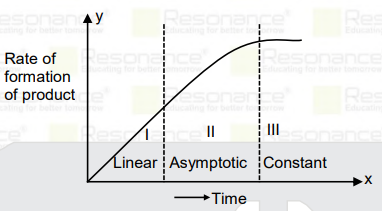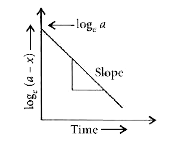For certain chemical reaction X→Y,the rate of formation of product is plotted against the time as shown in the figure.The number of correct statement/s from the following is________

(A) Over all order of this reaction is one
(B) Order of this reaction can't be determined
(C) In region I and III,the reaction is of first and zero order respectively
(D) In region-II,the reaction is on first order
(E) In region-II,the reaction is on first order
(E) In region-II,the order of reaction is in the range of 0.1 to 0.9.
Step by step video solution for For certain chemical reaction X rarr Y,the rate of formation of product is plotted against the time as shown in the figure.The number of correct statement/s from the following is________ (A) Over all order of this reaction is one (B) Order of this reaction can't be determined (C) In region I and III,the reaction is of first and zero order respectively(D) In region-II,the reaction is on first order (E) In region-II,the reaction is on first order (E) In region-II,the order of reaction is in the range of 0.1 to 0.9. by Chemistry experts to help you in doubts & scoring excellent marks in Class 12 exams.
Updated on:21/07/2023Topper's Solved these Questions
Similar Questions
Knowledge Check
The specific rate constant of a first order reaction depends on the
AConcentrations of reactantsBConcentrations of productsCTime of reactionDTemperature of reactionsIn the following plot, for a first order reaction, slope is equal to
 A−kB−k2.303C−2.303kD−k×2.303
A−kB−k2.303C−2.303kD−k×2.303The rate of chemical reaction (except zero order)
Adecreases from moment to momentBindependent constant throughoutCindependent of the order of reactionDreamin unchange
For a first order reaction, A→B, the rate =k×…………. .
View SolutionFor a first order chemical reaction : A → P. The correct statement(s) is/are :
View SolutionHalf-lives of a first order and a zero order reaction are same. Then the ratio of the initial rates of the first order reaction to that of zero order reaction is
View SolutionHalf-lives of a first order and a zero order reaction are same. Then the ratio of the initial rates of the first order reaction to that of zero order reaction is
View SolutionIf half-lives of a first order and zero order reactions are same, then the ratio of the initial rates of the first order reaction to that of zero order reaction is
View Solution
